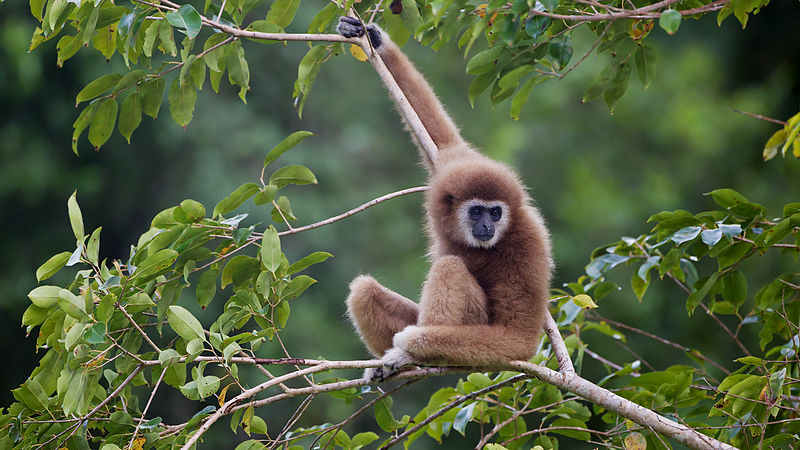Distinguishing features
The fur coloring of the lar gibbon varies from black and dark-brown to light-brown, sandy colors. The hands and feet are white-colored, likewise a ring of white hair surrounds the black face. Both males and females can be all color variants, and the sexes also hardly differ in size. (Wikipedia)
Size
- Size data has not been obtained.
Synonyms
Distribution and habitat preferences
They have the greatest north-south range of any of the gibbon species. They are found in Indonesia, Laos, Malaysia, Myanmar and Thailand. Their range historically extended from southwest China to Thailand and Burma south to the whole Malay Peninsula in primary and secondary tropical rain forests. It is also present in the northwest portion of the island of Sumatra. In recent decades, especially, the continental range has been reduced and fragmented. Lar gibbons are likely extinct in China, but if they still exist, they would only be found in southwest Yunnan, their former range.
They are usually found in lowland dipterocarp forest, hill dipterocarp forest, and upper dipterocarp forest, including primary lowland and submontane rainforest, mixed deciduous bamboo forest, and seasonal evergreen forest. They are not usually found higher than 1200 meters above sea level. (Wikipedia)
Chronotypes
Diet
It is considered frugivorous with fruit constituting 50% of its diet, but leaves (29%) are a substantial part, with insects (13%) and flowers (9%) forming the remainder. (Wikipedia)


